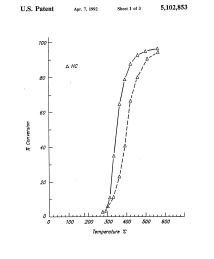Haren Gandhi
Advanced emission-control technology in the late 20th century created cleaner air worldwide, thanks to the introduction of the catalytic converter and subsequent innovations by scientists like Haren Gandhi. Gandhi's work in automotive catalyst technology improved the quality of exhaust by converting pollutants to harmless emissions, and enabled the catalytic converter to be more effective than ever before.
In 1970, the United States Clean Air Act mandated stringent emission control requirements that challenged the automotive industry. Gandhi, still completing his doctorate in chemical engineering at the University of Detroit, joined a Ford Motor Co. research team dedicated to achieving them. Thus began his research in areas including three-way catalysts (TWCs). TWCs convert carbon monoxide to carbon dioxide, hydrocarbons to carbon dioxide and water, and nitric oxide and nitrogen oxides to nitrogen and water. Gandhi reduced the use of key catalysts in the process — platinum, palladium and rhodium—through advances in precious metal utilization and recycling.
Gandhi and colleagues also coined the term "oxygen storage" and revealed how TWC capabilities could be expanded by adding material capable of storing oxygen during fuel-lean efforts and releasing the oxygen under fuel-rich efforts. Later, Gandhi and co-workers produced the definitive work on catalyst poisoning from lead, hastening the ban of leaded gasoline in the United States.
Gandhi earned 61 U.S. patents, all related to automotive catalysts. In 2002, Gandhi was awarded the National Medal of Technology. He was also one of the few Ford employees designated a Henry Ford Technical Fellow. Following his passing, Ford established the Dr. Haren Gandhi Research and Innovation Award.



